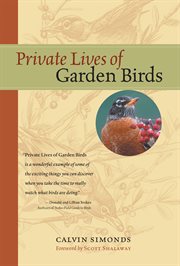Details
PUBLISHED
Made available through hoopla
DESCRIPTION
1 online resource
ISBN/ISSN
LANGUAGE
NOTES
Brimming with stories, wisdom, and expert knowledge, this delightful book gives enthusiasts a peek into the private worlds of eleven North American birds: swallows, blue jays, chickadees, song sparrows, house sparrows, phoebes, mockingbirds, crows, red-winged blackbirds, robins, and hummingbirds. Calvin Simonds shows you how to really observe these birds -- how to interpret the caws of crows, recognize blue jays from their facial markings, understand the flight patterns of swallows. You'll be enthralled as you eavesdrop on a group of sparrows trading songs in a "hootenanny," feel the dry grip of a chickadee's claws on your fingers, tramp through a summer meadow to visit a phoebe, and much more. Calvin Simonds is the pen name of a naturalist, professor of Ethology, and writer. He is the author of The WeatherWise Gardener and (with Phebe Leighton) The New American Landscape Gardener, as well as articles in Horticulture, Country Journal, and Harvard Magazine, among other publications. Simonds lives and watches birds on his farm in Massachusetts. Julie Zickefoose is a widely published natural history writer and artist who also presents nature lectures throughout the United States. Her illustrations have been seen in The New Yorker, Smithsonian Magazine, Bird Watcher's Digest, and other publications. She lives in Ohio. Blue Jays - The Family Reunion at Your Feeder My neighbor up the hill and I have had an argument. She is anti-blue jay and I am pro-blue jay. This argument distresses us both, since we have seen eye to eye on so many other issues. I am in favor of organic gardening; so is she. She is against nuclear reactors; so am I. When the town votes to widen a road, we both vote No. When the town votes to establish recycling, we both vote Yes. But I'm afraid if we were asked to vote on whether or not to create the blue jay, we would definitely split our votes on this issue. In fact, the blue jay may be the cause of our falling out. She said I encourage them. She said the word "encourage" with a kind of venom I thought would be reserved for somebody who kept rats as house pets or planted dandelions as a cover crop. She calls blue jays "bandits," and her feeders are of a specially constructed sort that are supposed to snap shut if anything heavier than a grosbeak treads on them. I scatter cracked corn and sunflower seed on the snow outside my study window in hopes that birds that don't object to my close scrutiny or the rattle of my typewriter will rummage through it. The blue jays are among the quickest of birds to accept the terms of this arrangement and so may be found flocked about my study window on any winter's day. So you see, I don't actually encourage the blue jays. I just don't discourage them. My neighbor from up the hill said that blue jays are thieves and brigands just like crows. Technically, she was correct. The blue jay is a crow - or a member of the crow family, at any rate - along with ravens and magpies and some other birds of dubious reputation. To be a member of the crow family is to keep bad company, taxonomically speaking. In Australia and Scotland crows are said to pluck out the eyes of lambs, and herdsmen can show you enucleated carcasses to prove it. All over the world crows of various sorts are blamed for depredations of songbird nests. "Crested crow" is the translation of the Latin name (Corvus cristatus) given the blue jay by the artist-naturalist John James Audubon, and his drawing of jays shows them jovially dining on the eggs of a partridge. But the blue jay's reputation as a nest robber is much overstated. Jays eat comparatively small amounts of animal matter of any sort, preferring nuts, seeds, and small fruits. In some parts of the United States they eat and store acorns, and in the old days they made good use of the chestnut groves that covered the eastern part of the co
Mode of access: World Wide Web







